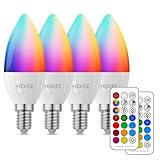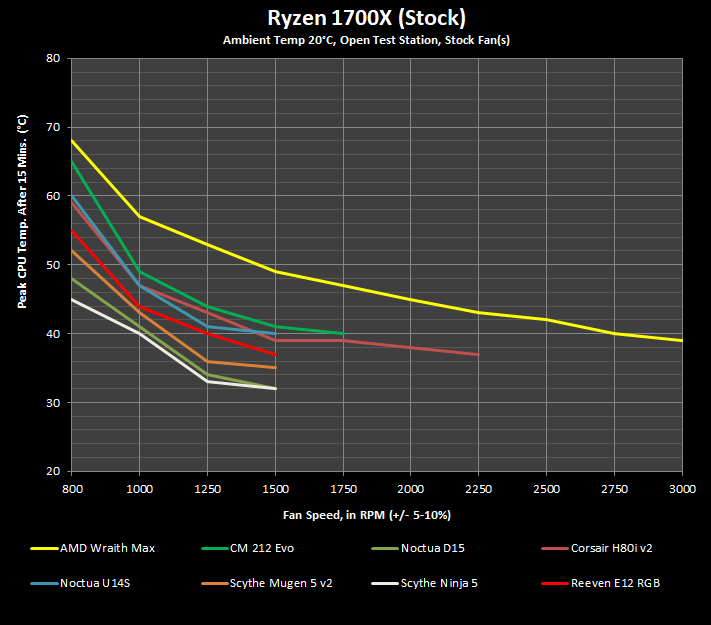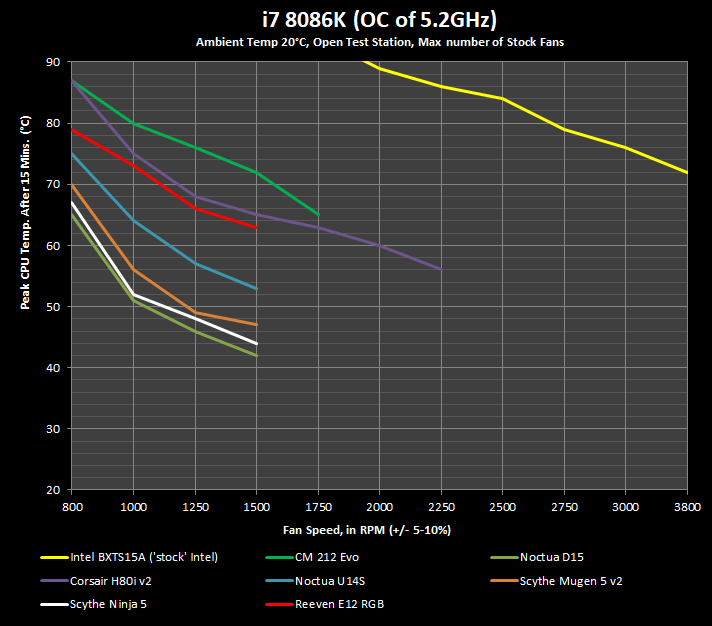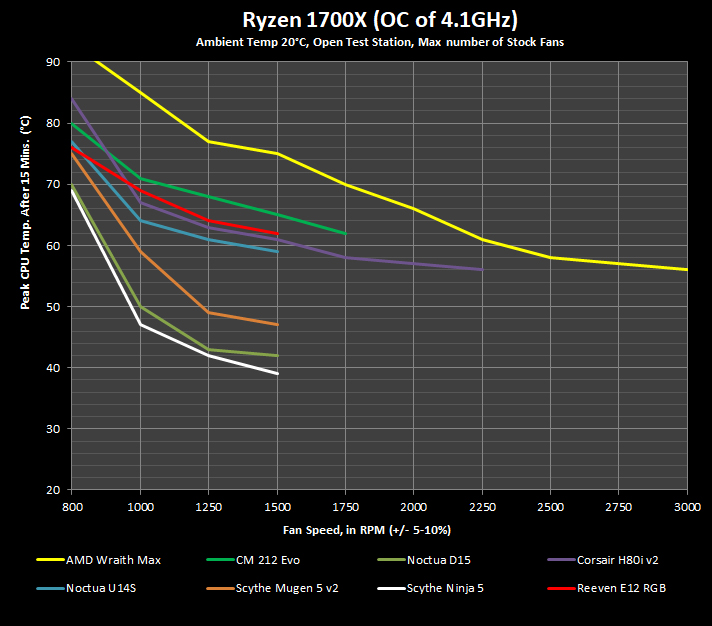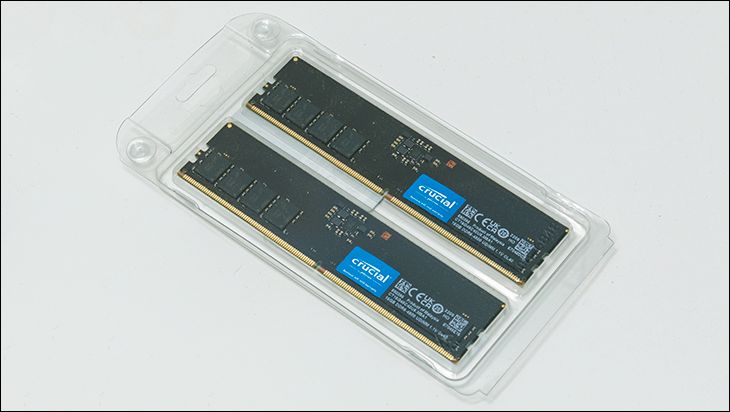
The shipping container is bright, colorful, and filled with a lot of good information. Mix in a good bunch of images of various features ‘in action’ and even on just a quick glance you will get a good idea of what this cooler has to offer.

Better still it is not just a pretty face. Instead the thick exterior cardboard is only the first layer of protection this shipping container offers. Once you open it up you will see a foam topper, a foam bottom layer, and the various components nestled inside even more cardboard. Quiet honestly, a cooler is not a fragile device… and yet this level of protection all but ensures that it will survive a trip across town, across country, or even all the way around the world. For an inexpensive CPU cooling solution Reeven certainly does not treat it like one. Color us impressed.

The list of accessories is also rather good, bordering on great considering its asking price. In grand total you can expect to find a good pictographic based installation pamphlet, a ton of mounting hardware (for everything from Intel 115x to 2066, AMD’s FM1 to FM2+, as well as AMD’s AM1 to AM4 socket type), a great RGB enabled fan, and enough fan mounting brackets to mount two fans, and a nice tube of TIM with enough for multiple installations. Not too shabby for an inexpensive cooler.

One of the ‘stars of the show’ of the Reeven E12 RGB is the included fan. In fact, it is what makes this CPU cooling solution the E12 RGB… instead of the $25, standard E12 variant. This is usually one area that manufactures skimp on when designing a thin, light, and cheap cooler. Reeven has not done that. Instead they have included a fan that would be right at home on much, much more expensive coolers. Even excluding its RGB LEDs and double ended 4-pin RGB header from the equation this fan is impressive. Yes, the seven translucent white fan blades glow when the eight RGB LEDs (located in hub) are active. Yes, you can plug this bad boy into a 4-pin RGB led controller (e.g. ‘Aura Sync’ on ASUS motherboards, RGB FUSION on Gigabyte, etc.). Yes, it is double header so you can daisy chain multiple LED devices to one header (a nice bonus as many less expensive motherboards only come with one)… but even if it was not LED enabled it still would be impressive.
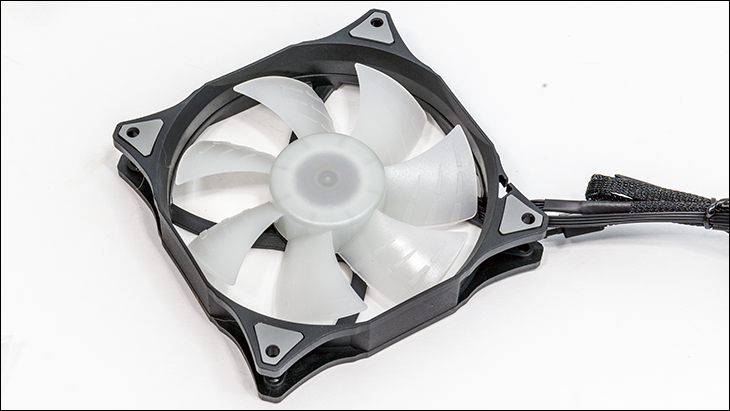
This is because this fan has amazing amount of horsepower at its disposal. Even though it is ‘only’ a 500-1500 RPM (PWM and voltage controllable) fan, it pushes a nice amount of air with incredibly high levels of pressure. To be precise at 1500rpms it is rated for a whopping 3.56mm of H20… and even at its lowest speed of 500RPM it still has 1.2mm of static pressure performance. To put this in perspective, many fans come with 1.2mm or less at their full speed and have as little as one third of it at their slowest rotational speed.
The reason it has such impressive static pressure capabilities is due to two things. Firstly, the seven blades are large and optimized for static pressure over CFM (this fan maxes out at a moderate 49CFM). The real secret though is each blade as multiple veins on each blade that focus more of the air and reduce turbulence. This is somewhat similar to how Noctua does things and calls it their ‘Flow Acceleration Channels” in that these ridges increase air speed on the outside edge of the blades which reduces suction of the blades themselves, and in turn increases the static pressure of the air being pushed down an on to the fin array.
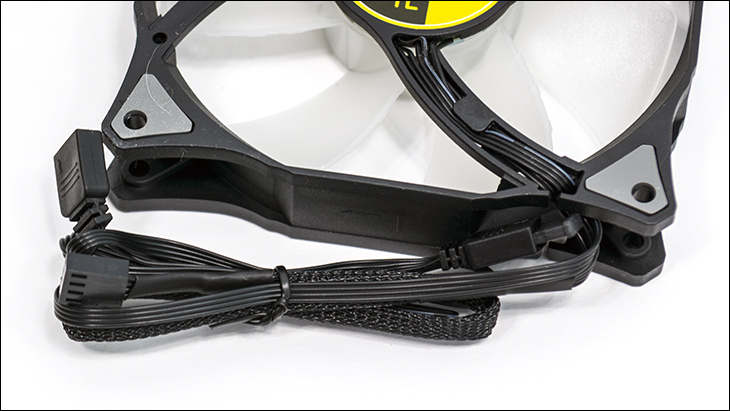
Mix in Fluid Dynamic Bearings with rubber anti-vibration pads on each corner and this fan is both powerful and not all that loud. In fact, at 1200RPM this new Reeven Kiran Sync series is darn quiet and even at 1500 it is not all that loud – especially compared to Cooler Master’s 2000RPM fans. Put simply they easily justify their 15 dollar (USD) asking price… or about half the cost of the entire Reeven E12 RGB cooling solution. Now that is knowing where to spend your budget when building a low-cost cooling solution.

Make no mistake the actual E12 RGB cooler is impressive in its own right. Unlike most cheap air based coolers which have a slab-sided fin array, Reeven has taken the time to engineer a rather impressive one with two sides that channel the air and reduce static pressure via removing the dead zone in front of the fan hub and multiple notches which will cut the air and focus it and over the array. This combination means that the E12 could have gotten away with a much lower static pressure fan, but by including an actually good fan with this great fin array design the end result is almost guaranteed to be outstanding.

The next round in the magazine to help persuade knowledgeable builders away from their usual cooler selection is the form-factor. On the one hand dimensions of 152x123x53mm and a weight of ‘only’ 590grams (with one fan attached) may not sound all that impressive when compared to the likes of the Scythe Ninja 5 – let alone heavyweights like the Noctua D series (where the D jokingly stands for “dayammmm that’s heavy”) – but the fact of the matter this is a noticeable boost in cooling potential compared to stock Intel or AMD coolers, and yet offers almost no more hassles when it comes to installation.

The secret to this is by being 153mm tall the E12 RGB can make use of 120mm fans (whereas AMD and Intel usually top out in the 90mm range), but because it is thin (almost as thin as the Noctua U12S) the cooling tower does not overhand the RAM nor motherboard heatsinks. Basically, it is big enough to be much more effective at cooling the CPU but not so big it comes along with baggage. Baggage like having to worry about the height of the RAM, the motherboard ‘bowing’ under the weight, the darn thing getting in the way of an M.2 slot. Pesky things that can turn a simple build into a headache-inducing PITA.

Of course, with such a thin fin array a typical solid metal base with heatsinks attached to it is not really all that optimal. Solid bases do indeed help spread out the heat load better but they are not as efficient at transferring heat from the CPU at lower temperatures. They only really start to come into their own when the heat is turned up… way up. On the other hand making the base of the heatpipes be the base of heatsink (albeit with metal inserts to stiffen and add structural integrity to the cooler) allows the CPU IHS to transfer the heat directly to said heatpipes without a efficiency robbing ‘middle man’ to slow things down. This simplicity allows for lower idle temperatures than both stock and most common CPU cooling solutions, and only water-based cooling solutions can compete.
The downside is twofold. Firstly, CPU’s these days are typically not all that big… and any heatpipes which are not in direct contact with the CPU is basically going to be idle. This is why four 6mm heatpipes spread apart is about the most heatpipes you can have in direct contact with the CPU’s Integrated Heat Spreader. This is why even though there is room for a fifth heatpipe in the fin array the Reeven E12 RGB ‘only’ uses four.

The other issue is copper heatpipes cannot be polished as smooth to a ‘mirror shine’ like solid bases can be. Copper is simply more porous, and since the heatpipes are thin walled (to increase the efficiency of heat transfer) polishing has to be done gently… lest the polishing cut through a heatpipe and makes the entire cooler a failure. Thus, it takes time and effort to do it right. Even then, the results are never going to be as good as nickel plated bases and it will take more TIM to fill up the pores in the base.
In the case of the Reeven E12 RGB, the base is actually above average. It is not quite polished to a mirror but it awfully close. Close enough that the amount of TIM needed will not be all that much more than a typical cooler. Put another way, we have seen a ton of Cooler Master 212 Hyper series (plus, evo, black, etc.) that came with a lot worse than this.

Overall there is a lot of things to like about this small cooler. So much so that if it acts even remotely close to as good as we think it will it may just unseat the 212 Hyper series as our ‘go to’ inexpensive cooler of choice. Put another way, it may be inexpensive but it certainly does not appear to be a cheap cooler, just one that does not cost an arm and a leg. Not too shabby for a $30 cooling solution.
